Scissor beak, aka: crossed beak, crooked beak, is a condition in which the top and bottom beaks do not align properly. It can be caused by genetics, an injury or the inability to maintain the beak’s length and shape by normal honing on rocks or other hard surfaces.
One of my first chicks, Esther, an Easter Egger, was born with with this common genetic deformity. It was so mild that I did not notice it for weeks. Scissor-beak varies in severity, but most chicks can eat and drink independently. Crossed beak need not be an automatic death sentence as believed by some. Most cross-beaked chicks adapt and thrive, leading long, happy lives. However, there are some chicks in which the defect is too severe for them to eat or drink independently and they can not survive without constant assistance.
Esther lived four years until without help eating or drinking. She was put to sleep after being diagnosed with cancer throughout her oviduct and other organs and she is dearly missed. It did take her more time and effort to eat than the other chickens and she was never as large as the other birds, but that is to be expected.
Since crossed beaked chickens cannot pick up pieces of food using both halves of their beaks as utensils, they adapt by scooping food into the bottom half of their beaks. I find that it helps to put Esther’s feed in a deep dish, raised up to chest level so it has less distance to travel to reach her tongue than if it were on the ground. This small adaptation is sometimes all it takes to help crossed-beaked chickens eat.
Some chickens find it easier to eat a feed to which water has been added to make it the consistency of oatmeal. Grinding up feed in a coffee grinder and adding water to make a wet mash may help severely scissor-beaked chickens.
The important thing to watch out for with this condition is that the chicken is able to eat, not only due to their physical limitations but because other flock members may attempt to keep them away from the feed. If that occurs, the chicken should be put in a safe place where only she can access the feed.
I have found that using a poultry nipple watering system has made drinking much less of an effort for Esther as the water drips into her mouth instead of her having to stoop down, scoop up some in her lower beak and hope that it makes it to the back of her throat when she stands up straight.
Chickens maintain the length and shape of their beaks by wiping them on rocks or other abrasive surfaces while foraging, but scissor beaked chickens have difficulty with this routine task. Due to the severity of Esther’s defect, she cannot hone her beak length independently and we periodically trim it for her using dog nail clippers. A Dremmel tool or file can accomplish the same objective, but the vibration from those methods may be more upsetting to the bird than a quick slip with nail clippers..
(Note: Chickens confined to a run should be provided with a paver, brick or cement block for beak honing.)
When trimming Esther’s beak, we always have styptic powder at the ready in our chicken first aid kit. Beaks are vascular and if cut too far back, will bleed profusely. Unfortunately, I know this from first-hand experience and it was a frightening lesson in preparedness.
When chicks have scissor beak, it is safe to assume that genetics are to blame, therefore breeding them as adults is not recommended since the condition can be passed down to future generations.
Kathy Shea Mormino
Affectionately known internationally as The Chicken Chick®, Kathy Shea Mormino shares a fun-loving, informative style to raising backyard chickens. …Read on


shop my SPONSORS
Scissor beak, aka: crossed beak, crooked beak, is a condition in which the top and bottom beaks do not align properly. It can be caused by genetics, an injury or the inability to maintain the beak’s length and shape by normal honing on rocks or other hard surfaces.
One of my first chicks, Esther, an Easter Egger, was born with with this common genetic deformity. It was so mild that I did not notice it for weeks. Scissor-beak varies in severity, but most chicks can eat and drink independently. Crossed beak need not be an automatic death sentence as believed by some. Most cross-beaked chicks adapt and thrive, leading long, happy lives. However, there are some chicks in which the defect is too severe for them to eat or drink independently and they can not survive without constant assistance.
Esther lived four years until without help eating or drinking. She was put to sleep after being diagnosed with cancer throughout her oviduct and other organs and she is dearly missed. It did take her more time and effort to eat than the other chickens and she was never as large as the other birds, but that is to be expected.
Since crossed beaked chickens cannot pick up pieces of food using both halves of their beaks as utensils, they adapt by scooping food into the bottom half of their beaks. I find that it helps to put Esther’s feed in a deep dish, raised up to chest level so it has less distance to travel to reach her tongue than if it were on the ground. This small adaptation is sometimes all it takes to help crossed-beaked chickens eat.
Some chickens find it easier to eat a feed to which water has been added to make it the consistency of oatmeal. Grinding up feed in a coffee grinder and adding water to make a wet mash may help severely scissor-beaked chickens.
The important thing to watch out for with this condition is that the chicken is able to eat, not only due to their physical limitations but because other flock members may attempt to keep them away from the feed. If that occurs, the chicken should be put in a safe place where only she can access the feed.
I have found that using a poultry nipple watering system has made drinking much less of an effort for Esther as the water drips into her mouth instead of her having to stoop down, scoop up some in her lower beak and hope that it makes it to the back of her throat when she stands up straight.
Chickens maintain the length and shape of their beaks by wiping them on rocks or other abrasive surfaces while foraging, but scissor beaked chickens have difficulty with this routine task. Due to the severity of Esther’s defect, she cannot hone her beak length independently and we periodically trim it for her using dog nail clippers. A Dremmel tool or file can accomplish the same objective, but the vibration from those methods may be more upsetting to the bird than a quick slip with nail clippers..
(Note: Chickens confined to a run should be provided with a paver, brick or cement block for beak honing.)
When trimming Esther’s beak, we always have styptic powder at the ready in our chicken first aid kit. Beaks are vascular and if cut too far back, will bleed profusely. Unfortunately, I know this from first-hand experience and it was a frightening lesson in preparedness.
When chicks have scissor beak, it is safe to assume that genetics are to blame, therefore breeding them as adults is not recommended since the condition can be passed down to future generations.



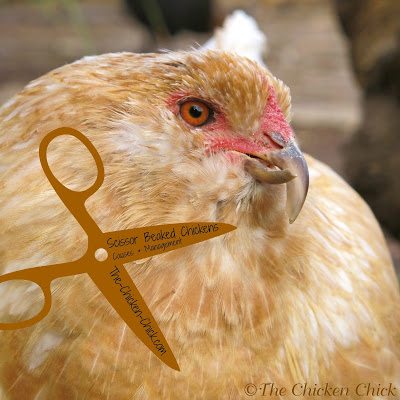
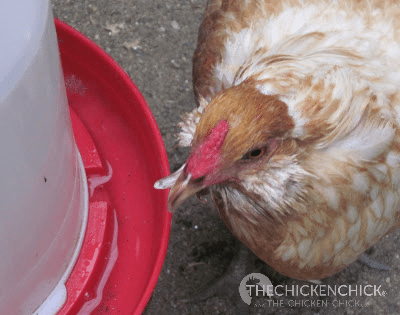
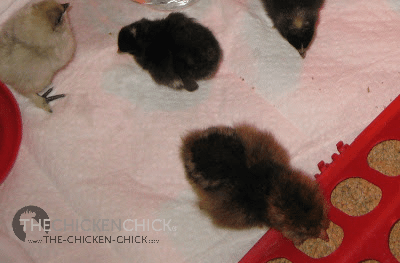
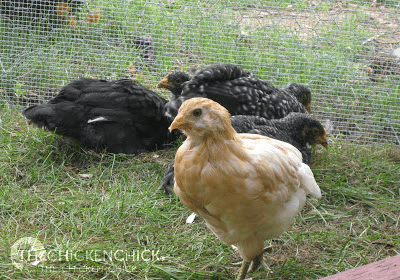
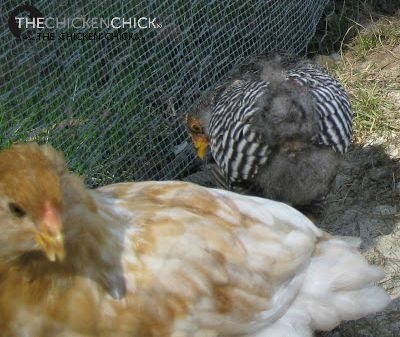
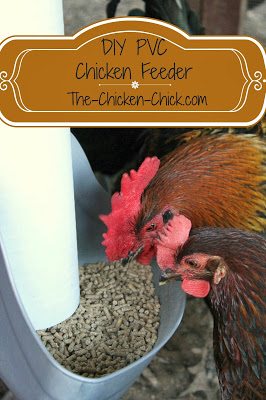
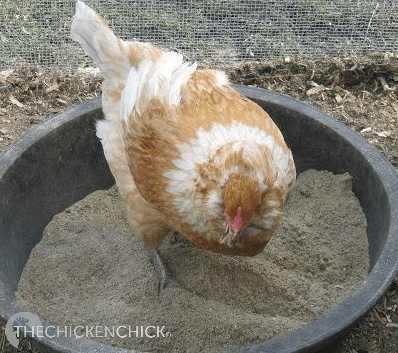
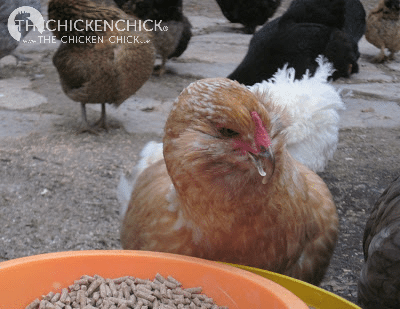
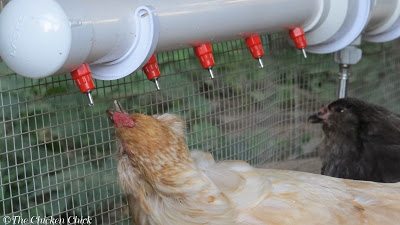
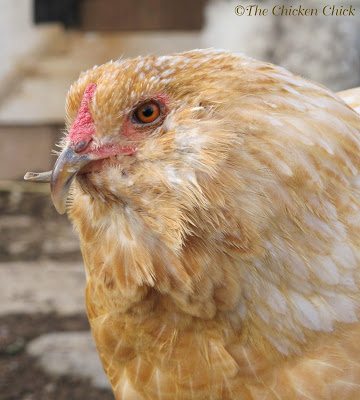
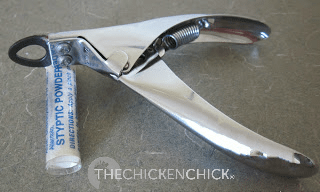
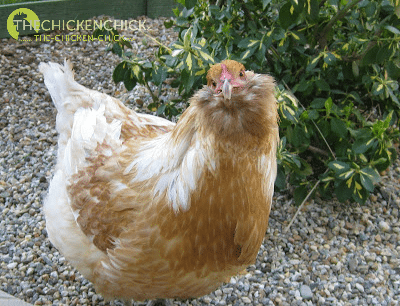

























Kathy,
Thank you for posting about this topic. I have a little cross beaked silkie. Im not real sure on where or how to trim her beak. and is the beak like toe nails on dogs…if you take off a little every few days the quick will move back? Are you filing the tips or sides or?
That's a great question. Chickens do have a blood supply in their beaks just like dogs do in their nails but I'm not sure if it recesses or not.
We cut too far back once and it was a nightmare, it took hours to stop the bleeding regardless of which product we used. It's best to take only a little at at time until her top beak is just a little longer than her lower beak, as it would be normally. I don't file Esther's beak but you certainly can if you prefer.
Thanks very much for all the info.. me and my hubby are in to chicks and just got 4 chicks( easter eggers* and our black has crossed beak.. she seems to be doing well eating a drinking find.. at what time. age should we start trimming her beak?
Thanks
Robyn
Hi Robyn! When the top beak begins to interfere wtih closing the lower beak or it appears as though she's having difficulty scooping food up into her mouth, that's when she'll need a trim.
I did an internet search and found your article to be the best for info and least scary – all others say to put my girl down! Just noticed one of our Buckeyes w/a crossed beak. She seems to be the friendliest of the bunch and seems to have no problems yet w/eating or drinking. Will keep an eye on her and hopefully she'll be just fine. This is our first year w/chickens and we're still trying not to panic when issues come up.
Thanks for the great info…our Silkie rooster has scissor beak as well. Reading your blog on this reaffirmed what we have been doing..we use the nail trimmer as well..and always prepared for possibility of cutting to far back…thanks again!!
Thank you so much for posting this. I have a 5 week old chick that has a crossed beak. It isn't too bad now, but like Esther, it will probably get worse. I ordered 25 chicks and she is the "mystery" chick that McMurray hatchery includes, so I'm not sure what she is! She looks blue or lavender. She is small but eats fine. She's so cute and seems to hold her own! I named her Betty White!
Love your blog, Robin